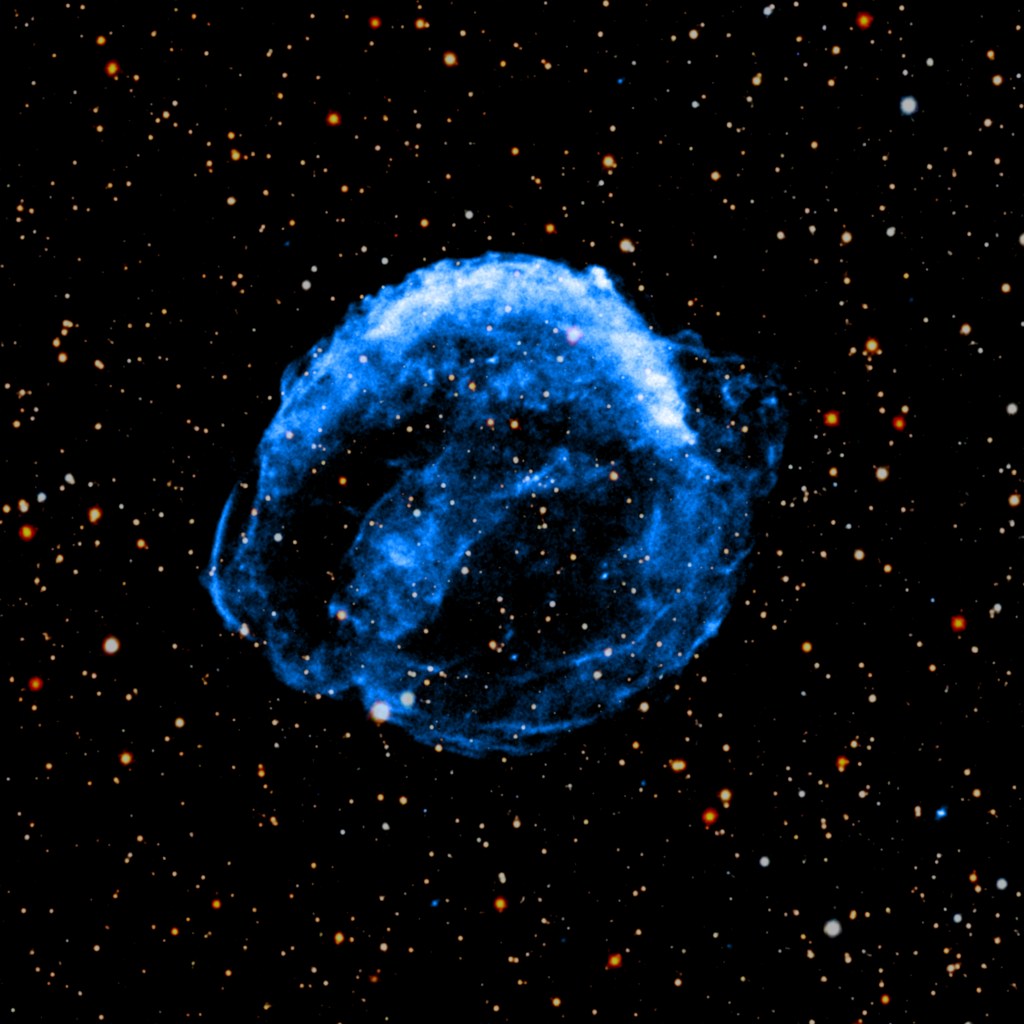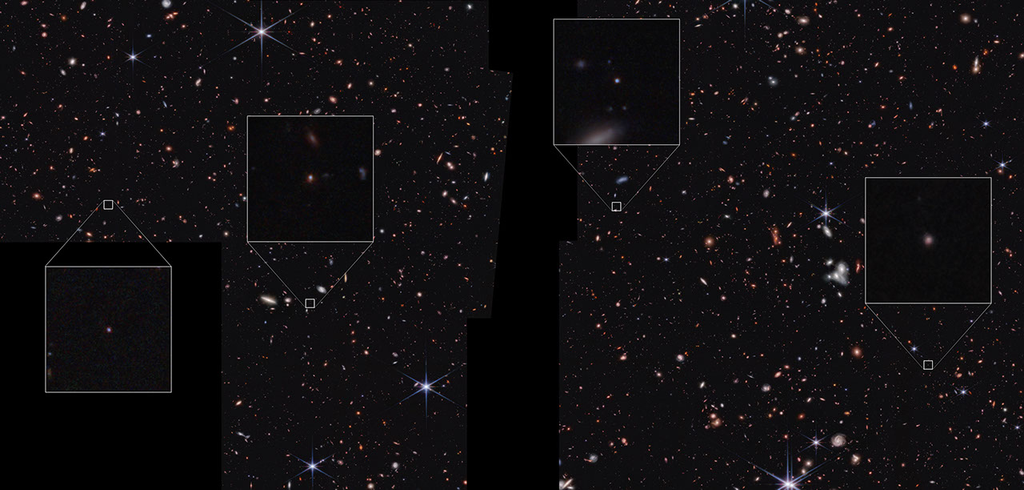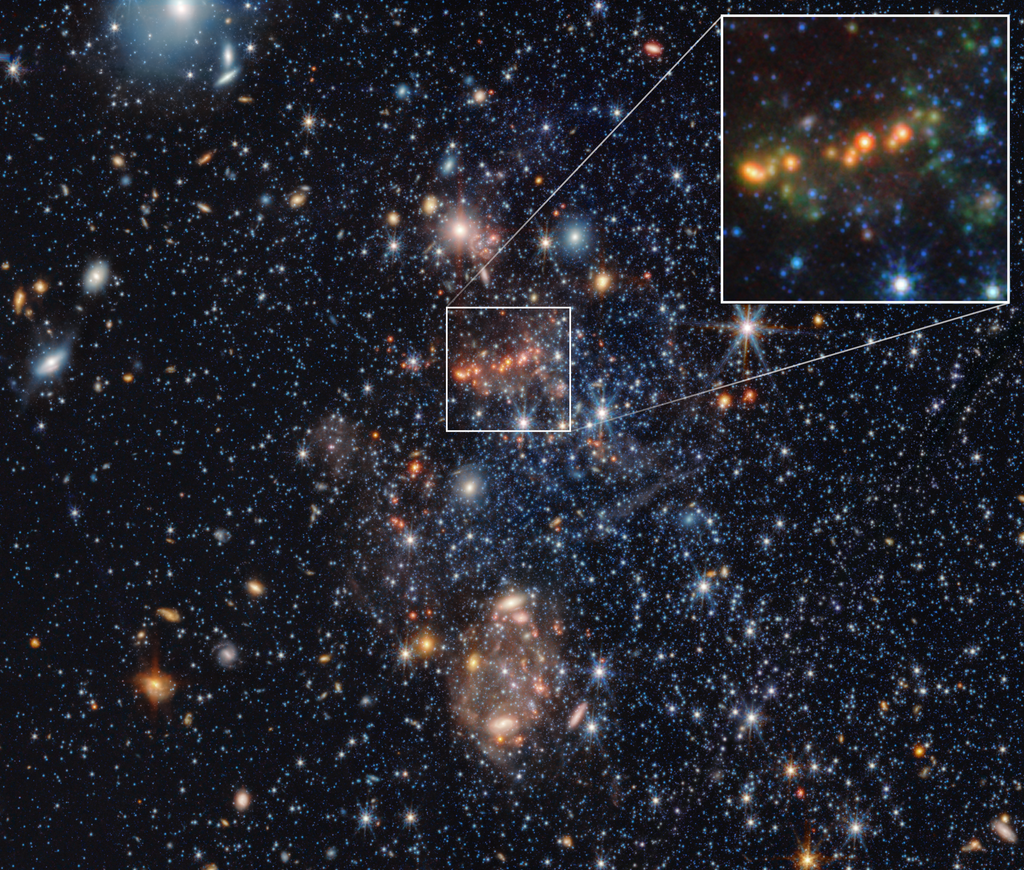1 min read
Beta Pictoris Disk Hides Giant Elliptical Ring System
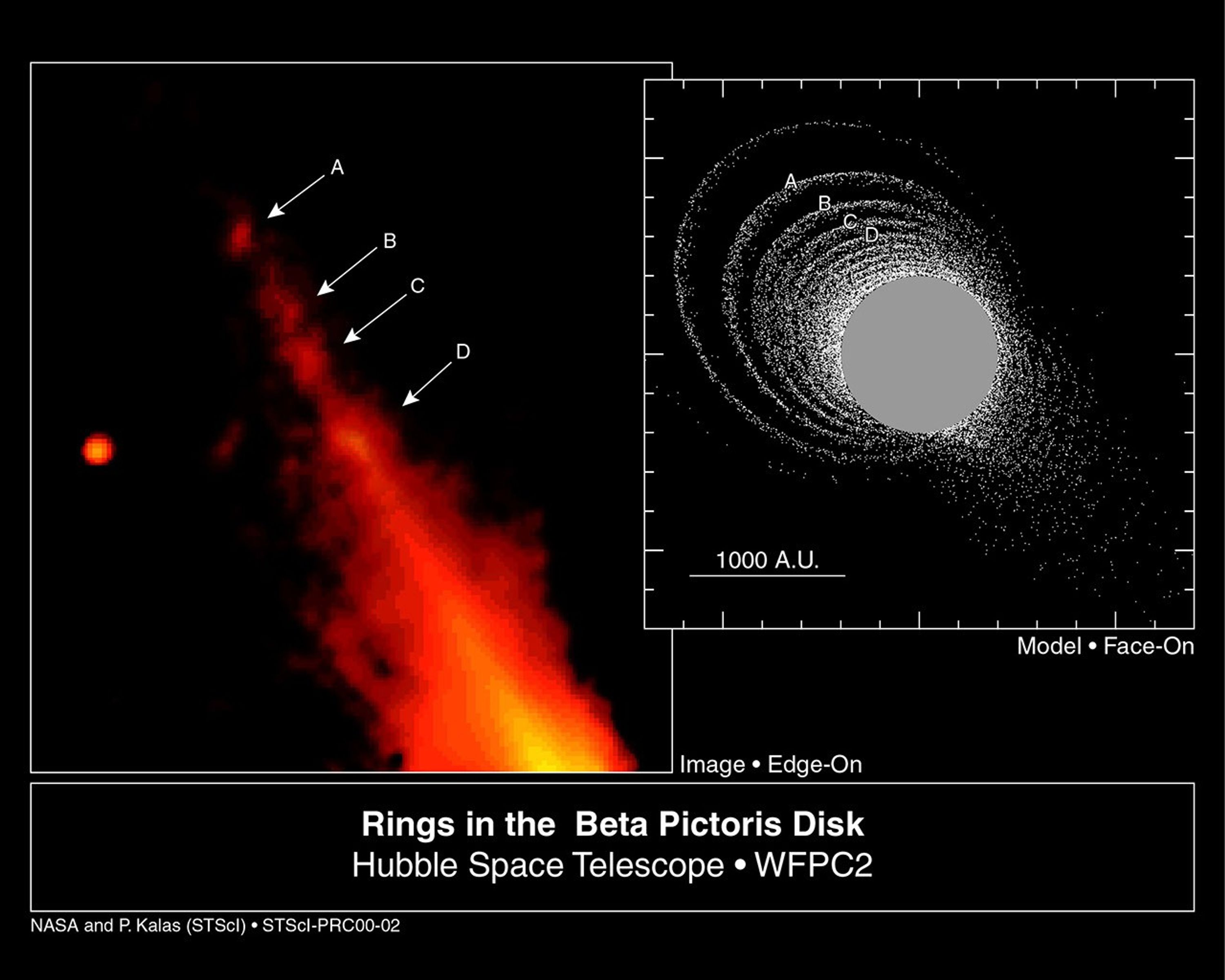
[Left] – A NASA Hubble Space Telescope false-color, visible-light picture of one side of the edge-on dust disk around the star Beta Pictoris. Knots in the disk (marked A,B,C,D) are interpreted as rings of dust, seen edge-on.
[Right] – A still frame from a computer simulation, which shows a circumstellar dust disk highly perturbed by the gravitational pull of a bypassing star. The gray solid area represents the initial shape and size of the undisturbed disk. In the simulation, the gravity of the passing star rearranges the orbit of each particle, setting up an elliptical ring system that may have survived for the last 100,000 years since the impact occurred.
About the Object
- R.A. PositionR.A. PositionRight ascension – analogous to longitude – is one component of an object's position.05h 47m 17.08s
- Dec. PositionDec. PositionDeclination – analogous to latitude – is one component of an object's position.-51° 3' 59.45"
- Object NameObject NameA name or catalog number that astronomers use to identify an astronomical object.Beta Pictoris
- Release DateJanuary 15, 2000
- Science ReleaseBeta Pictoris Disk Hides Giant Elliptical Ring System
- CreditLeft: NASA and Paul Kalas (Space Telescope Science Institute); Right: John Larwood (Queen Mary and Westfield College, London, United Kingdom)
Related Images & Videos
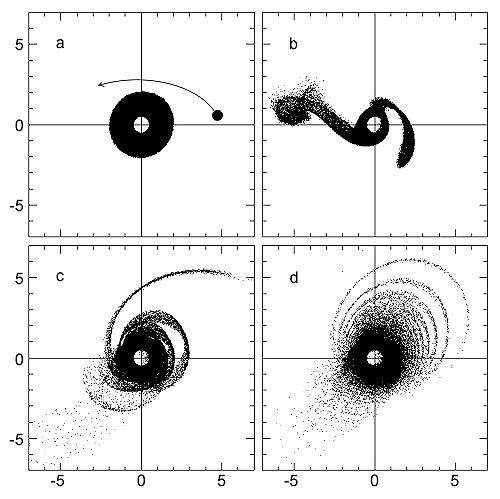
Computer Simulation – Disruption of Beta Pictoris Disk
These four images are from a computer simulation of a star flying by and disrupting a circumstellar disk of dust around the star Beta Pictoris. Frame (a) shows the encounter setup, where a small M-class star swings within 700 astronomical units (1 AU is the distance between...
Share
Details
Claire Andreoli
NASA’s Goddard Space Flight Center
Greenbelt, Maryland
claire.andreoli@nasa.gov












